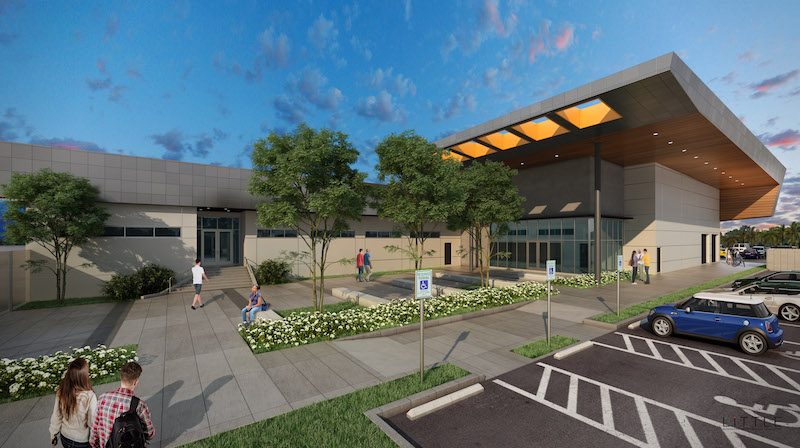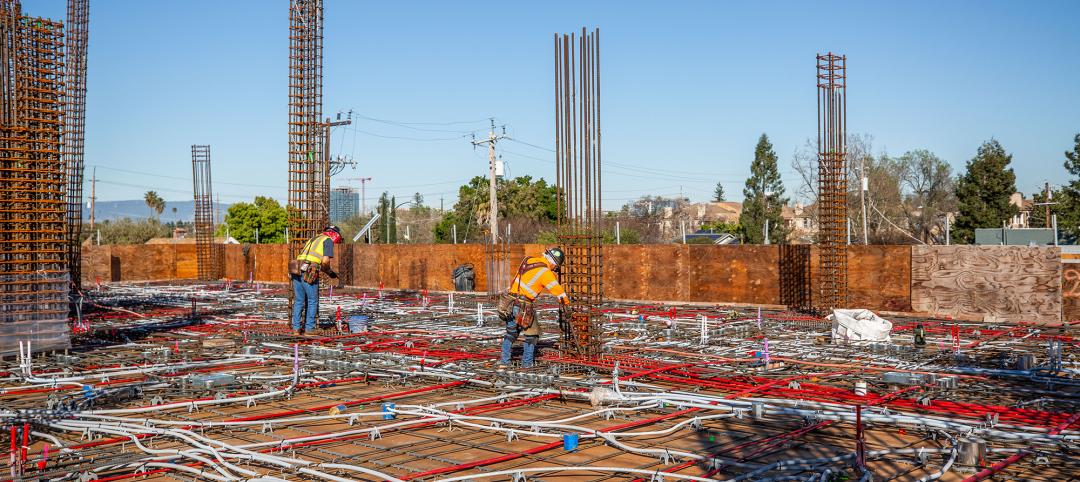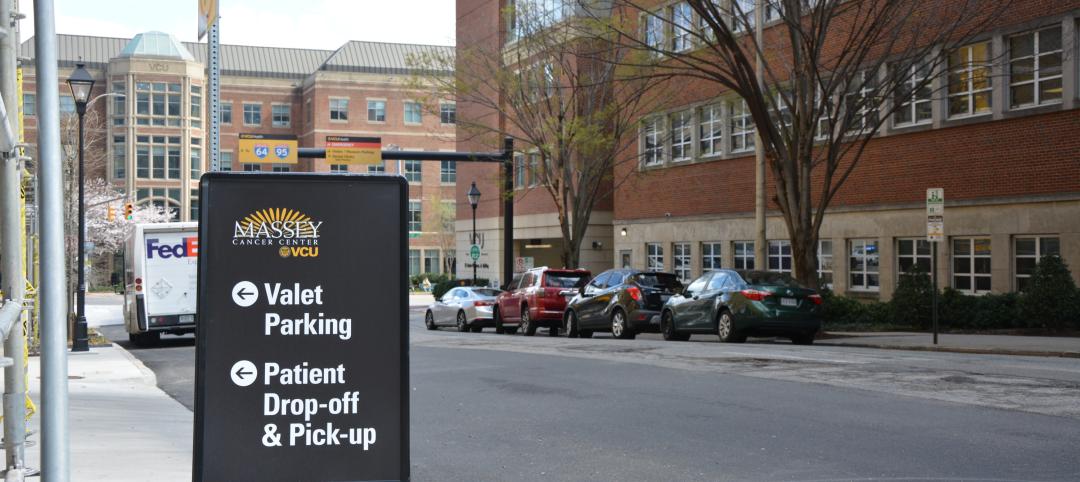On May 13, C.W. Driver, in partnership with Little Diversified Architectural Consulting, broke ground on the Kinesiology and Athletics Complex at Orange Coast College, a $36 million, 88,000-sf building within an Education sector that typically accounts for more than half of this Pasadena, Calif.-based general contractor’s annual revenue.
C.W. Driver, the oldest licensed builder headquartered in Southern California, is celebrating its 100th anniversary this year, and is showing little sign of slowing down. The company, with seven offices and 365 employees across California, generates between $700 million and $850 million per year in revenue.
In a consolidating industry where firms are frenetically acquiring new practices and disciplines to stay competitive, C.W. Driver remains an anomaly: a GC that builds almost exclusively in one state. Its portfolio includes academic, entertainment and sports, retail, civic and cultural, office, commercial hospitality and gaming, healthcare, residential and senior living.
“It’s not that we haven’t tried in the past” to diversify, says Karl Kreutziger, the firm’s president, who spoke with BD+C last week. At one time, C.W. Driver was self-performing concrete and drywall. It also once had an international business in Singapore.
Kreutziger, who has been with the firm since 2011, attributes its longevity to sticking with its core competencies and focusing the bulk of its work in the Greater Los Angeles market. (Eighty percent of its revenue comes from repeat customers.)
The company also has management continuity, starting with its CEO Dana Roberts, who has been with C.W. Driver for 48 years. In the 1990s, Roberts brought in two partners: CFO Bessie Kouvara, who retired in 2017; and Executive Vice President John Janacek, who oversees estimating.

Karl Kreutziger, C.W.Driver's president since 2011, attributes his company's longevity, in part, to its careful selection of projects. Image: C.W. Driver
The company was founded in 1919 by John McDonald and Clarence Wike Driver, the latter of whom had been working for one of the oldest architectural firms in L.A. During its first decade in business, C.W. Driver worked mostly on smaller projects. Driver’s son, Douglas, led the company through its next era and was active until 1987, when he turned over the reins to Roberts.
At a time when recruiting and retaining talent are challenges for many AEC firms, C.W. Driver has been able to hold onto its employees in part by offering some of them ownership in the company. It currently has 25 owners. And over the past two years, says Kreutziger, “we’ve had some ‘boomerangs,’ people who had left the company and have returned.” The fact that it offers full health insurance to all of its employees doesn’t hurt, either.
Like other GCs, C.W. Driver must deal with labor shortages. Keeping its trades on board, says Kreutziger, starts with a focused business development strategy “that identifies the projects we can be successful doing.” That requires early involvement at the preconstruction level, and then “committing to our key trade partners,” he says.
To avoid commoditizing its services, C.W. Driver steers away from design-bid-build projects, which account for less than 2% of its annual revenue. And while it has done work in Nevada, C.W. Driver usually passes on projects outside of its primary markets because, explains Kreutziger, “we just can’t get the [subs] to go there.”
As it moves into its second century, C.W. Driver wants to continue to grow organically. Kreutziger says the firm has been spending more time lately on succession planning and employee training. It also wants to make sure it is ahead of emerging markets like modular and panelized construction.
The firm is open, albeit cautiously, to new ventures that include acquisition. In August 2013, C.W. Driver acquired Good & Roberts, a 34-year-old San Diego-based construction company, which helped to bolster a market where C.W. Driver had been growing since 2006.
C.W. Driver also operates Driver SPG, an internal group it formed in 2011 that specializes in tenant improvement projects ranging from $500,000 to $15 million. Driver SPG represents about $80 million of C.W. Driver’s annual revenue, and “there’s a lot of crossover clients,” says Kreutziger.

C.W. Driver is the oldest liscensed builder headquartered in Southern California, a state where the GC continues to do most of its work. Image: C.W. Driver
Related Stories
Mass Timber | May 31, 2024
Mass timber a big part of Western Washington University’s net-zero ambitions
Western Washington University, in Bellingham, Wash., 90 miles from Seattle, is in the process of expanding its ABET-accredited programs for electrical engineering, computer engineering and science, and energy science. As part of that process, the university is building Kaiser Borsari Hall, the 54,000-sf new home for those academic disciplines that will include teaching labs, research labs, classrooms, collaborative spaces, and administrative offices.
Construction Costs | May 31, 2024
Despite challenges, 2024 construction material prices continue to stabilize
Gordian’s Q2 2024 Quarterly Construction Cost Insights Report indicates that supply chain issues notwithstanding, many commodities are exhibiting price normalization.
University Buildings | May 30, 2024
Washington University School of Medicine opens one of the world’s largest neuroscience research buildings
In St. Louis’ Cortex Innovation District, Washington University School of Medicine recently opened its new Jeffrey T. Fort Neuroscience Research Building. Designed by CannonDesign and Perkins&Will, the 11-story, 609,000-sf facility is one of the largest neuroscience buildings in the world.
Affordable Housing | May 30, 2024
General contractor’s keys to a successful affordable housing project
General contractors can have tremendous influence over a project’s success in terms of schedule, budget, and quality. However, to ensure a project is put on this path, there are a few factors that must be considered.
MFPRO+ New Projects | May 29, 2024
Two San Francisco multifamily high rises install onsite water recycling systems
Two high-rise apartment buildings in San Francisco have installed onsite water recycling systems that will reuse a total of 3.9 million gallons of wastewater annually. The recycled water will be used for toilet flushing, cooling towers, and landscape irrigation to significantly reduce water usage in both buildings.
Healthcare Facilities | May 28, 2024
Healthcare design: How to improve the parking experience for patients and families
Parking is likely a patient’s—and their families—first and last touch with a healthcare facility. As such, the arrival and departure parking experience can have a profound impact on their experience with the healthcare facility, writes Beth Bryan, PE, PTOE, PTP, STP2, Principal, Project Manager, Walter P Moore.
MFPRO+ News | May 28, 2024
ENERGY STAR NextGen Certification for New Homes and Apartments launched
The U.S. Environmental Protection Agency recently launched ENERGY STAR NextGen Certified Homes and Apartments, a voluntary certification program for new residential buildings. The program will increase national energy and emissions savings by accelerating the building industry’s adoption of advanced, energy-efficient technologies, according to an EPA news release.
Women in Design+Construction | May 28, 2024
Commerce Department launches Million Women in Construction Community Pledge
The U.S. Department of Commerce launched its Million Women in Construction Community Pledge this month to boost the ranks of women in construction companies. Federal investments are creating a construction boom that is increasing job opportunities for construction and trade workers.
Laboratories | May 24, 2024
The Department of Energy breaks ground on the Princeton Plasma Innovation Center
In Princeton, N.J., the U.S. Department of Energy’s Princeton Plasma Physics Laboratory (PPPL) has broken ground on the Princeton Plasma Innovation Center (PPIC), a state-of-the-art office and laboratory building. Designed and constructed by SmithGroup, the $109.7 million facility will provide space for research supporting PPPL’s expanded mission into microelectronics, quantum sensors and devices, and sustainability sciences.
MFPRO+ News | May 24, 2024
Austin, Texas, outlaws windowless bedrooms
Austin, Texas will no longer allow developers to build windowless bedrooms. For at least two decades, the city had permitted developers to build thousands of windowless bedrooms.

















